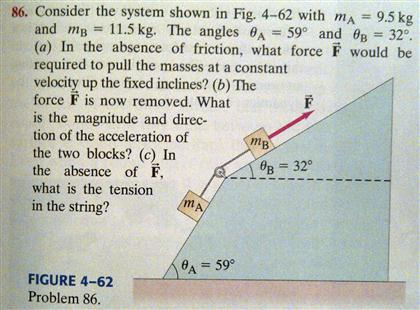Consider the system shown in Fig. 4-62 with mA = 9.5 kg and mB = 11.5 kg. The angles θA = 59∘ and θB = 32∘, (a) In the absence of friction, what force F→ would be required to pull the masses at a constant velocity up the fixed inclines? (b) The force F→ is now removed. What is the magnitude and direction of the acceleration of the two blocks? (c) In the absence of F→, what is the tension in the string? FIGURE 4-62 Problem 86.
